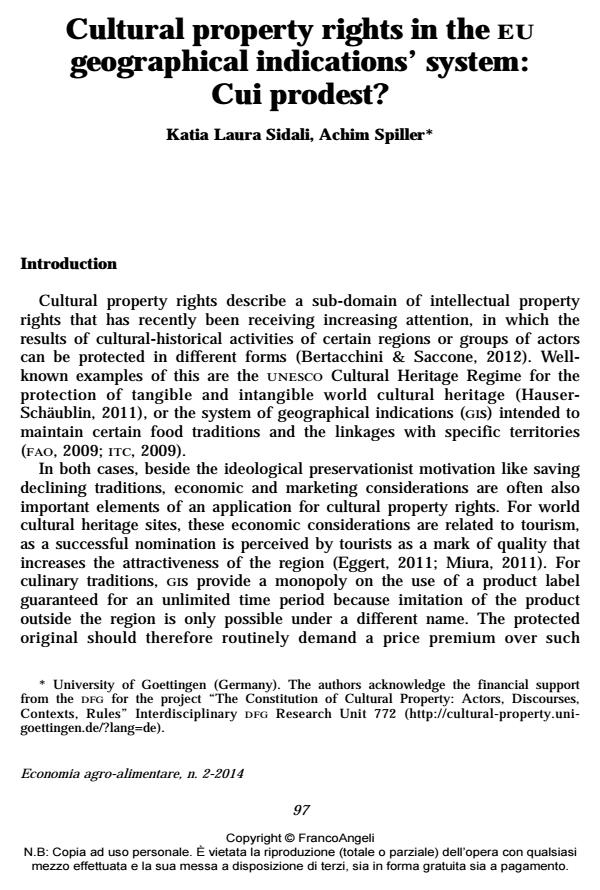Cultural property rights in the eu geographical indications’ system: Cui prodest?
Titolo Rivista ECONOMIA AGRO-ALIMENTARE
Autori/Curatori Katia Laura Sidali, Achim Spiller
Anno di pubblicazione 2014 Fascicolo 2014/2
Lingua Inglese Numero pagine 8 P. 97-104 Dimensione file 44 KB
DOI 10.3280/ECAG2014-002006
Il DOI è il codice a barre della proprietà intellettuale: per saperne di più
clicca qui
Qui sotto puoi vedere in anteprima la prima pagina di questo articolo.
Se questo articolo ti interessa, lo puoi acquistare (e scaricare in formato pdf) seguendo le facili indicazioni per acquistare il download credit. Acquista Download Credits per scaricare questo Articolo in formato PDF

FrancoAngeli è membro della Publishers International Linking Association, Inc (PILA)associazione indipendente e non profit per facilitare (attraverso i servizi tecnologici implementati da CrossRef.org) l’accesso degli studiosi ai contenuti digitali nelle pubblicazioni professionali e scientifiche
This paper develops five theses to analyze the distribution of economic, social and environmental effects connected with the system of geographical indications (gis). The authors claim that the distribution of benefits for the agricultural sector largely differentiate among European countries (Thesis 1); non-organized outsiders in the region who do not financially support the common pool resource can profit particularly greatly from a gis system (Thesis 2); among gis consortia, those with a clear marketing leadership of a focal supplier profit whereas those with many small suppliers are easier to get pressed by dominant buyers (Thesis 3); the role of public authorities may represent a significant bias in the application phase (Thesis 4) and environmental benefits attached to the gis such as biodiversity preservation are largely overestimated (Thesis 5).
Parole chiave:Cultural property rights, eu system of geographical indications, pdo, pgi
Jel codes:D23, D18, D21, M31, P14
- New trends in the debate on geographical indications: evidence from Ecuador Katia L. Sidali, Nelson R. Granja Toledo, Alvaro Monteros Altamirano, Mirian Sanchez Fernandez, Maria del Rosario Mejía, Wilson Usina, in ECONOMIA AGRO-ALIMENTARE 1/2016 pp.39
DOI: 10.3280/ECAG2016-001003 - Kultur als Eigentum Sarah May, Katia Laura Sidali, Achim Spiller, Bernhard Tschofen, pp.31 (ISBN:9783863952044)
- Salsa, sauce, and other ingredients: nature, evolution and conservation of cultural heritage Edgardo I. Garrido-Pérez, Katia Laura Sidali, in ECONOMIA AGRO-ALIMENTARE 3/2014 pp.81
DOI: 10.3280/ECAG2014-003007
Katia Laura Sidali, Achim Spiller, Cultural property rights in the eu geographical indications’ system: Cui prodest? in "ECONOMIA AGRO-ALIMENTARE" 2/2014, pp 97-104, DOI: 10.3280/ECAG2014-002006